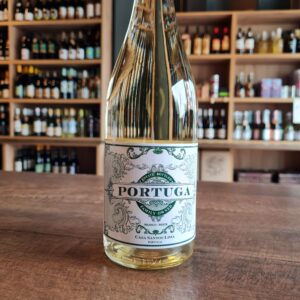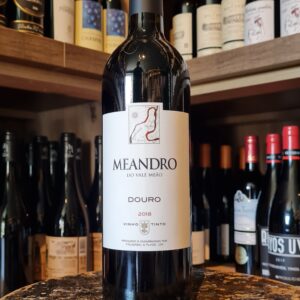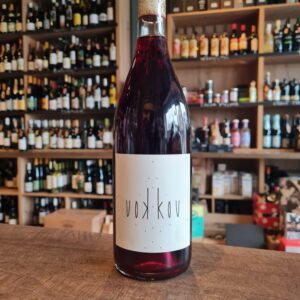-
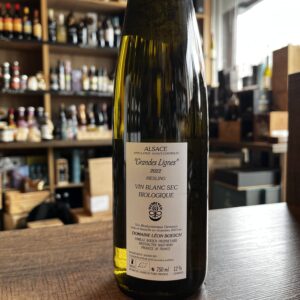
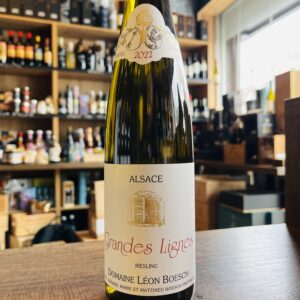 The Boesch domaine is located within the Vallèe Noble, in the “Ballons des Vosges” natural park. A magical place, surrounded by splendid vineyards at the foot of the two highest mountains of the Vosges range. The Boesch family has lived there and worked the land since 1640. 25 year old biodynamic vines planted in a limestone and sandstone-clay soil on an east facing hillside give this delicious wine. This wine is the subject of evident care: ploughing, natural treatments, and the vines are fertilized with compost produced on the estate. The harvest, the highlight of the year, is carried out exclusively by hand, and fermentation takes place with indigenous yeasts in oak casks. The nose is characterized by rhubarb, apricot, anise and gingerbread. On the palate it is very clean. Definitely a great Riesling.
The Boesch domaine is located within the Vallèe Noble, in the “Ballons des Vosges” natural park. A magical place, surrounded by splendid vineyards at the foot of the two highest mountains of the Vosges range. The Boesch family has lived there and worked the land since 1640. 25 year old biodynamic vines planted in a limestone and sandstone-clay soil on an east facing hillside give this delicious wine. This wine is the subject of evident care: ploughing, natural treatments, and the vines are fertilized with compost produced on the estate. The harvest, the highlight of the year, is carried out exclusively by hand, and fermentation takes place with indigenous yeasts in oak casks. The nose is characterized by rhubarb, apricot, anise and gingerbread. On the palate it is very clean. Definitely a great Riesling. -
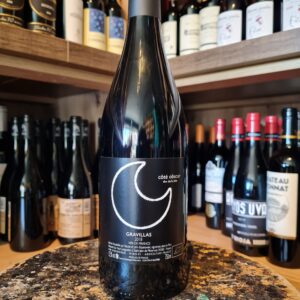 A typical blend of almost century-old Carignan and Cabernet Sauvignon. The vineyard is treated with respect, neither chemicals nor weed killers are tolerated, in order to preserve the biodiversity of the surrounding flora and fauna. The favourable terroir of white limestone pebbles, combined with low yields, gives mineral wines, with a beautiful freshness , and concentrated fruit. Manual harvest in 15 kg crates with severe sorting in the vineyard. 3 weeks pellicular maceration which brings a lot of fullness. We will find the aromatic complexity of Carignan with some notes of pepper and a tannic structure provided by the Cabernet. the tannins are nevertheless very fine. Pair this Coté Obscur wine with beef entrecote, duck skewer and some soft cheese. A real treat! Would recommend to decant this for at least an hour.
A typical blend of almost century-old Carignan and Cabernet Sauvignon. The vineyard is treated with respect, neither chemicals nor weed killers are tolerated, in order to preserve the biodiversity of the surrounding flora and fauna. The favourable terroir of white limestone pebbles, combined with low yields, gives mineral wines, with a beautiful freshness , and concentrated fruit. Manual harvest in 15 kg crates with severe sorting in the vineyard. 3 weeks pellicular maceration which brings a lot of fullness. We will find the aromatic complexity of Carignan with some notes of pepper and a tannic structure provided by the Cabernet. the tannins are nevertheless very fine. Pair this Coté Obscur wine with beef entrecote, duck skewer and some soft cheese. A real treat! Would recommend to decant this for at least an hour. -
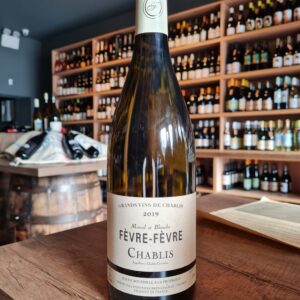 The Domaine Fèvre AC Chablis is a great place to start if you're looking to venture into wonderful world of Chablis. This wine comes from vines predominantly 15-25 years old some parcels planted in the 1950s and 1960s finding their way into the final blend. The stony soils of the region impart a fine minerality to the wine and with no oak in sight, the freshness and soft texture here are a highlight. This is Chablis 101 - sleek, fine-boned and delicious. This is great value from a family-owned domaine in the heart of the region. Is a fresh and fruity wine with flavours of white flesh fruits, like peach and pear, with citrus notes and good minerality. Pleasant as an aperitif, it makes an ideal partner for oysters, shellfish and grilled fish
The Domaine Fèvre AC Chablis is a great place to start if you're looking to venture into wonderful world of Chablis. This wine comes from vines predominantly 15-25 years old some parcels planted in the 1950s and 1960s finding their way into the final blend. The stony soils of the region impart a fine minerality to the wine and with no oak in sight, the freshness and soft texture here are a highlight. This is Chablis 101 - sleek, fine-boned and delicious. This is great value from a family-owned domaine in the heart of the region. Is a fresh and fruity wine with flavours of white flesh fruits, like peach and pear, with citrus notes and good minerality. Pleasant as an aperitif, it makes an ideal partner for oysters, shellfish and grilled fish -
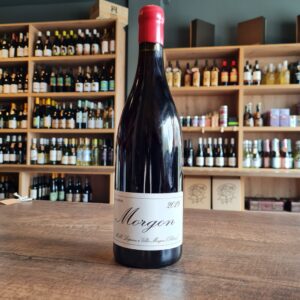 Domaine Marcel Lapierre Morgon is a natural red wine made by Domaine Marcel Lapierre with the Gamay variety in the AOC Morgon (Burgundy). Domaine Marcel Lapierre is one of the pioneer wineries that has been making natural wines since Marcel Lapierre, a true pacesetter among Beaujolais producers, took over the Villié-Morgon estate in 1973. With his work philosophy, he was committed to combining traditional best practices with new technologies so that his wines would be a true reflection of the landscape. In 1981, under the strong influence of natural wine master Jules Chavet, Marcel was among the first to produce wines of minimal intervention, without adding SO2 or any other substance. Domaine Marcel Lapierre Morgon 2018 is a fruity red wine with aromas of cherry, violet and liquorice, covered with a forest freshness and refreshing balsamic tones. On the palate it is structured, fresh and sweet. It begins with a sharp acidity that blends with the touches of fruit and liquorice and the intense minerality. This is a refreshing red, perfect for spring and summer; recommended to drink with charcuterie, paté, cheese, roast ham, roast lamb, roast chicken and turkey and with spicy Thai and Chinese dishes. Serve at the lower end of the suggested temperature range if you like your light red wines served cooler like the French
Domaine Marcel Lapierre Morgon is a natural red wine made by Domaine Marcel Lapierre with the Gamay variety in the AOC Morgon (Burgundy). Domaine Marcel Lapierre is one of the pioneer wineries that has been making natural wines since Marcel Lapierre, a true pacesetter among Beaujolais producers, took over the Villié-Morgon estate in 1973. With his work philosophy, he was committed to combining traditional best practices with new technologies so that his wines would be a true reflection of the landscape. In 1981, under the strong influence of natural wine master Jules Chavet, Marcel was among the first to produce wines of minimal intervention, without adding SO2 or any other substance. Domaine Marcel Lapierre Morgon 2018 is a fruity red wine with aromas of cherry, violet and liquorice, covered with a forest freshness and refreshing balsamic tones. On the palate it is structured, fresh and sweet. It begins with a sharp acidity that blends with the touches of fruit and liquorice and the intense minerality. This is a refreshing red, perfect for spring and summer; recommended to drink with charcuterie, paté, cheese, roast ham, roast lamb, roast chicken and turkey and with spicy Thai and Chinese dishes. Serve at the lower end of the suggested temperature range if you like your light red wines served cooler like the French -
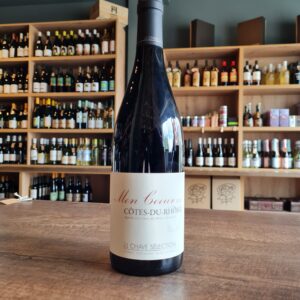 Domaine Jean-Louis Chave is one of the finest producers in the Northern Rhone. 16 generations of wine making has led to mastery of their art. This astonishing experience and expertise is pervasive in this wine. This deliciously ripe Syrah/Grenache blend has a wonderful core of dark, berry fruit supported by a framework of ripe tannin with cooling, granitic notes and a sleek, sophisticated texture. The sublime quality of the wines at this Domaine have meant that there has always been a long queue of Wine Merchants desperate for a glimpse of the Chave cellars. Gerard's son, Jean-Louis makes the wine at the Estate now and his ideal is to produce wine that is as pure an expression of the grape and terroir as possible. He achieves this by only vinifying the healthiest grapes produced from low yielding vines, intervening as little as possible while making the wine and bottling without filtration. His wines are some of the Rhône’s most complete and sophisticated examples. Jean Louis Chaves' selection wines are benchmarks of the Rhone, packed with regional character, that are made from a mixture of declassified Domaine fruit and grapes that are grown by Jean-Louis in conjunction with other vignobles. After tasting this gorgeous wine, I understood the name "Mon Coeur".
Domaine Jean-Louis Chave is one of the finest producers in the Northern Rhone. 16 generations of wine making has led to mastery of their art. This astonishing experience and expertise is pervasive in this wine. This deliciously ripe Syrah/Grenache blend has a wonderful core of dark, berry fruit supported by a framework of ripe tannin with cooling, granitic notes and a sleek, sophisticated texture. The sublime quality of the wines at this Domaine have meant that there has always been a long queue of Wine Merchants desperate for a glimpse of the Chave cellars. Gerard's son, Jean-Louis makes the wine at the Estate now and his ideal is to produce wine that is as pure an expression of the grape and terroir as possible. He achieves this by only vinifying the healthiest grapes produced from low yielding vines, intervening as little as possible while making the wine and bottling without filtration. His wines are some of the Rhône’s most complete and sophisticated examples. Jean Louis Chaves' selection wines are benchmarks of the Rhone, packed with regional character, that are made from a mixture of declassified Domaine fruit and grapes that are grown by Jean-Louis in conjunction with other vignobles. After tasting this gorgeous wine, I understood the name "Mon Coeur". -
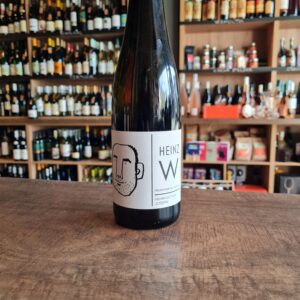 Grüner Veltliner is Austria's most famous grape variety and is considered Austria's national grape variety. The best Grüner Veltliner wines come from the northeast of the country, especially regions such as the Wachau, Kamptal and Kremstal bordering the Danube River. This wine made by Weingut Weixelbaum the winery of Heinz and Gabi Weixelbaum. Located in the village of Strasser in the Austrian Kamptal. It is a medium sized, typical Austrian winery. A family business that is passed on from generation to generation. Heinz Weixelbaum has very good vineyards on soils of 'urgestein' and 'loess', Heinz also dares to prune a lot in the spring, so that his wines are more powerful than most from the region. The Weixelbaum family only makes wine from grapes from its own 22 hectares of vineyards. Everything is done by hand and the cellar is full of the most modern equipment. The vineyards in the Kamptal owe their name to the river Kamp that flows through the area. It is one of the most prestigious Austrian wine districts. In this wine-growing region, which is part of the federal state of Lower Austria, warm and sunny summer days ensure optimal ripening of the grapes. In addition, a cooling breeze during the night guarantees flawless aromas and refined acids in the wines. The vineyards are mainly terraced along the steep banks of the river. The soil consists largely of loess, loam, gravel, sandstone and shale. Because the roots of the vines can reach up to six meters deep, the wines get a different character on every surface.
Grüner Veltliner is Austria's most famous grape variety and is considered Austria's national grape variety. The best Grüner Veltliner wines come from the northeast of the country, especially regions such as the Wachau, Kamptal and Kremstal bordering the Danube River. This wine made by Weingut Weixelbaum the winery of Heinz and Gabi Weixelbaum. Located in the village of Strasser in the Austrian Kamptal. It is a medium sized, typical Austrian winery. A family business that is passed on from generation to generation. Heinz Weixelbaum has very good vineyards on soils of 'urgestein' and 'loess', Heinz also dares to prune a lot in the spring, so that his wines are more powerful than most from the region. The Weixelbaum family only makes wine from grapes from its own 22 hectares of vineyards. Everything is done by hand and the cellar is full of the most modern equipment. The vineyards in the Kamptal owe their name to the river Kamp that flows through the area. It is one of the most prestigious Austrian wine districts. In this wine-growing region, which is part of the federal state of Lower Austria, warm and sunny summer days ensure optimal ripening of the grapes. In addition, a cooling breeze during the night guarantees flawless aromas and refined acids in the wines. The vineyards are mainly terraced along the steep banks of the river. The soil consists largely of loess, loam, gravel, sandstone and shale. Because the roots of the vines can reach up to six meters deep, the wines get a different character on every surface. -
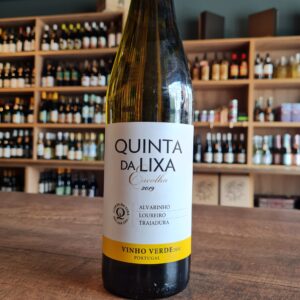 This wine is made from the noblest and best known Portuguese grape variety(Alvarinho), in a year of exceptional quality. The aroma is intense and very attractive, with flowery and fruity notes, and lemonade hints, in a combination of great character and fineness. Tropical fruit in the mouth, acidity fits nicely with the fruit. Long finish
This wine is made from the noblest and best known Portuguese grape variety(Alvarinho), in a year of exceptional quality. The aroma is intense and very attractive, with flowery and fruity notes, and lemonade hints, in a combination of great character and fineness. Tropical fruit in the mouth, acidity fits nicely with the fruit. Long finish -
Out of stock
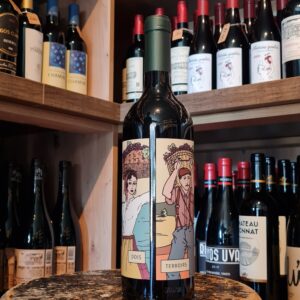 This blend of Aragonez, Syrah and Pinot Noir results from the fusion of two distinct terroirs, where the Mediterrean climate of the Alentejan interior meets the cool maritime climate of the Alentejan Atlantic coast. Pinot Noir, grown in sandy soils in our cool, Alentejan Atlantic coastal vineyards, provides freshness and elegance to balance the fruit generosity of the Aragonez and Syrah grown further inland, on the ancient clay over limestone soils surrounding the Estate. Viticulture here is certified sustainable. Attractive lifted red berry fruit aromas, with a touch of vanilla. Vibrant fruit on the palate, juicy and intense, finishing with a nice acidity.
This blend of Aragonez, Syrah and Pinot Noir results from the fusion of two distinct terroirs, where the Mediterrean climate of the Alentejan interior meets the cool maritime climate of the Alentejan Atlantic coast. Pinot Noir, grown in sandy soils in our cool, Alentejan Atlantic coastal vineyards, provides freshness and elegance to balance the fruit generosity of the Aragonez and Syrah grown further inland, on the ancient clay over limestone soils surrounding the Estate. Viticulture here is certified sustainable. Attractive lifted red berry fruit aromas, with a touch of vanilla. Vibrant fruit on the palate, juicy and intense, finishing with a nice acidity. -
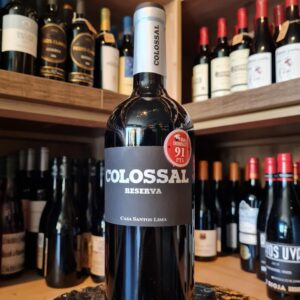 This blend of Touriga Nacional, Syrah, Tinta Roriz, and Alicante Bouschet lives up to its name. With an intense rubi colour, this wine presents itself with a great concentration in the nose. Extremely rich aroma with predominance of red ripe fruits and some floral notes, well integrated with notes of spices coming from the ageing in French and American oak barrels. In the mouth it shows great complexity with notes of plums and blackberries. The finish is rich and elegant. Excellent wine for hearty spiced meals with red grilled or roast meat, lamb and game dishes. Enjoy!
This blend of Touriga Nacional, Syrah, Tinta Roriz, and Alicante Bouschet lives up to its name. With an intense rubi colour, this wine presents itself with a great concentration in the nose. Extremely rich aroma with predominance of red ripe fruits and some floral notes, well integrated with notes of spices coming from the ageing in French and American oak barrels. In the mouth it shows great complexity with notes of plums and blackberries. The finish is rich and elegant. Excellent wine for hearty spiced meals with red grilled or roast meat, lamb and game dishes. Enjoy! -
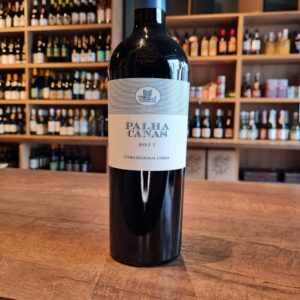 Aromatically very complex, it presents strong sensations of red fruits, jam and vanilla. Equally complex in the tasting, it evolutes to smooth velvety notes of red and ripe fruits, chocolate and oak ageing. Persistent and well-balanced aftertaste with tannins that evidence the structure of the wine and its longevity. Enjoy the Palha-Canas Tinto with hearty dishes from pork and beef, lamb and game. In addition, the wine goes perfectly with soft and hard cheese. You would have to stand on the terrace of the estate to understand why it is called Boavista (“fine view”). Your gaze would naturally wander over the vineyards which slope down into the valley in front of the house and then meet two hills on the opposite side where the lines of vines form an exciting geometrical pattern. It is a fine view indeed, this sight of the vineyards of Boavista. The Quinta de Boavista is situated right in the middle of the hills of the Estremadura wine-growing region, about fifty kilometres north of Lisbon. The close proximity of the nearby ocean provides for humidity and wind. The soil composition is a sandy clay. It is full of fossilized ocean deposits and right in front of the estate big petrified bones of a saurian were found which now adorn the terrace. The land has been owned for generations by the family of José Luis Oliveira da Silva. He is a banker by profession. For some years now he has focussed on wine-growing. He modernised the wine cellar, bought new barrels and recruited an able oenologist. He was among the first in Portugal who produced varietal wines from autochthonous grapes. The results are very exciting. The white Fernao Pires is a wine with attractive fruit aromas and with a distinct mineral note, the red Castelao and the red Tinta Roriz are wines that have concentration and a complex personality. This new generation of Portuguese wines gives you offhand inspiration.
Aromatically very complex, it presents strong sensations of red fruits, jam and vanilla. Equally complex in the tasting, it evolutes to smooth velvety notes of red and ripe fruits, chocolate and oak ageing. Persistent and well-balanced aftertaste with tannins that evidence the structure of the wine and its longevity. Enjoy the Palha-Canas Tinto with hearty dishes from pork and beef, lamb and game. In addition, the wine goes perfectly with soft and hard cheese. You would have to stand on the terrace of the estate to understand why it is called Boavista (“fine view”). Your gaze would naturally wander over the vineyards which slope down into the valley in front of the house and then meet two hills on the opposite side where the lines of vines form an exciting geometrical pattern. It is a fine view indeed, this sight of the vineyards of Boavista. The Quinta de Boavista is situated right in the middle of the hills of the Estremadura wine-growing region, about fifty kilometres north of Lisbon. The close proximity of the nearby ocean provides for humidity and wind. The soil composition is a sandy clay. It is full of fossilized ocean deposits and right in front of the estate big petrified bones of a saurian were found which now adorn the terrace. The land has been owned for generations by the family of José Luis Oliveira da Silva. He is a banker by profession. For some years now he has focussed on wine-growing. He modernised the wine cellar, bought new barrels and recruited an able oenologist. He was among the first in Portugal who produced varietal wines from autochthonous grapes. The results are very exciting. The white Fernao Pires is a wine with attractive fruit aromas and with a distinct mineral note, the red Castelao and the red Tinta Roriz are wines that have concentration and a complex personality. This new generation of Portuguese wines gives you offhand inspiration. -
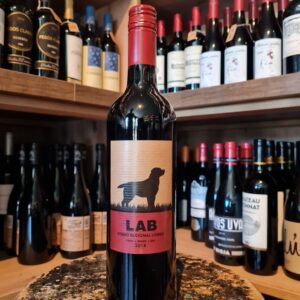 Lab tested and approved! This Lab is asking to be walked. Hitting all the puns here, only because that is exactly what you will get with this wine. It does what it says on the tin, if not more. This lovely red from Lisbon is full bodied but smooth and is very aromatic with notes of ripe black and red fruits. On the palate, juicy plums and dark berry fruit flavour with plenty of fresh yet fine tannins that take over at the finish, along with flavours of spice and liquorice. It is not top of the shelf but it does punch above its weight.
Lab tested and approved! This Lab is asking to be walked. Hitting all the puns here, only because that is exactly what you will get with this wine. It does what it says on the tin, if not more. This lovely red from Lisbon is full bodied but smooth and is very aromatic with notes of ripe black and red fruits. On the palate, juicy plums and dark berry fruit flavour with plenty of fresh yet fine tannins that take over at the finish, along with flavours of spice and liquorice. It is not top of the shelf but it does punch above its weight. -
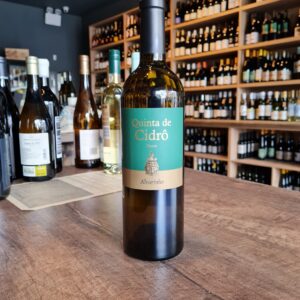 Quinta de Cidrô presents the first Alvarinho produced in the Douro, another superb result of the continuous innovation that takes place in the vineyards of the property. The idea to plant Alvarinho in the Douro came from their ambition to produce a high quality white monovarietal from a Portuguese grape variety. A wine marked by fine and delicate aromas of citrus fruit and orange blossom, which presents an excellent aromatic complexity. Expressive and personalized, it is above all a full-bodied Douro wine, revealing flavours that can be guessed at in the aroma. A long and distinct Alvarinho, determined by a crisp acidity and a tasty minerality.
Quinta de Cidrô presents the first Alvarinho produced in the Douro, another superb result of the continuous innovation that takes place in the vineyards of the property. The idea to plant Alvarinho in the Douro came from their ambition to produce a high quality white monovarietal from a Portuguese grape variety. A wine marked by fine and delicate aromas of citrus fruit and orange blossom, which presents an excellent aromatic complexity. Expressive and personalized, it is above all a full-bodied Douro wine, revealing flavours that can be guessed at in the aroma. A long and distinct Alvarinho, determined by a crisp acidity and a tasty minerality. -
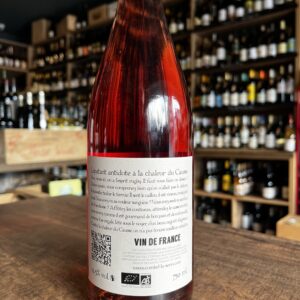
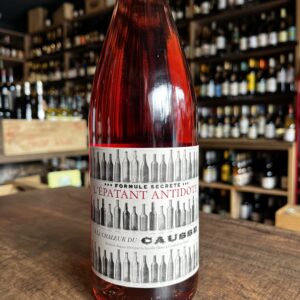 Combel La Serre has been certified organic since 2013, though farmed without chemicals for several decades up to that point. 100% Malbec (known in Cahors as Auxerrois). The vines are 40 years old, grown on clay and limestone soils at an elevation of 320m. Fermentation and aging take place in small tanks."The Splendid Antidote to the Heat of the Causse" is the amusing and appropriate name of this refreshing rosé. (The Causse is the high limestone plateau around Cahors, which gets brutally hot in the summer.) The wine shows a pretty pink/orange color and aromas of ripe cherry, raspberry and cassis with citrus and spice. There are creamy cassis, raspberry and citrus flavors on the palate which shows lovely ripeness and density, with hints of orange peel, earth, smoke and brown spice that continue in the long finish. This is quite delicious and a great value - as are all the wines from Jean-Pierre and Julien Ilbert at Combel-la-Serre. Great Value
Combel La Serre has been certified organic since 2013, though farmed without chemicals for several decades up to that point. 100% Malbec (known in Cahors as Auxerrois). The vines are 40 years old, grown on clay and limestone soils at an elevation of 320m. Fermentation and aging take place in small tanks."The Splendid Antidote to the Heat of the Causse" is the amusing and appropriate name of this refreshing rosé. (The Causse is the high limestone plateau around Cahors, which gets brutally hot in the summer.) The wine shows a pretty pink/orange color and aromas of ripe cherry, raspberry and cassis with citrus and spice. There are creamy cassis, raspberry and citrus flavors on the palate which shows lovely ripeness and density, with hints of orange peel, earth, smoke and brown spice that continue in the long finish. This is quite delicious and a great value - as are all the wines from Jean-Pierre and Julien Ilbert at Combel-la-Serre. Great Value -
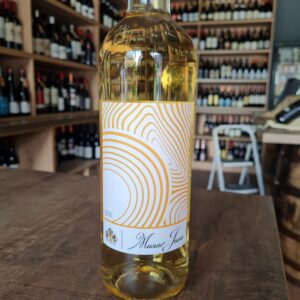 Château Musar is located in the Bekaa Valley, in Lebanon. It was created by Gaston Hochar in 1930 when he was only 20 years-old and inspired by Lebanon’s 6,000-year winemaking tradition and his travels in Bordeaux. Serge Hochar, his son, started producing wines at the end of 1950. His brother, Ronald, joined at the beginning of 1960. In 1975, 97% of the production was sold locally. It picked up after the Bristol Wine Fair of 1979 and, in 1990, at the end of the civil war, the export accounted for 97% of the production. The 3rd generation of the Hochar family started joining in 1994 and is still a family-run-business. Musar Jeune White is an unoaked blend of Viognier, Vermentino, Chardonnay from youthful Bekaa Valley vines. Crisp and aromatic, this eclectic blend of French and Italian varieties has its own distinct personality – passionfruit, apples, elderflowers – and a dry, refreshing finish. No need to decant; enjoy chilled (10-12°C) with grilled fish, herb-scented roast chicken, seafood salads and spicy oriental dishes. All their wines are Organic.
Château Musar is located in the Bekaa Valley, in Lebanon. It was created by Gaston Hochar in 1930 when he was only 20 years-old and inspired by Lebanon’s 6,000-year winemaking tradition and his travels in Bordeaux. Serge Hochar, his son, started producing wines at the end of 1950. His brother, Ronald, joined at the beginning of 1960. In 1975, 97% of the production was sold locally. It picked up after the Bristol Wine Fair of 1979 and, in 1990, at the end of the civil war, the export accounted for 97% of the production. The 3rd generation of the Hochar family started joining in 1994 and is still a family-run-business. Musar Jeune White is an unoaked blend of Viognier, Vermentino, Chardonnay from youthful Bekaa Valley vines. Crisp and aromatic, this eclectic blend of French and Italian varieties has its own distinct personality – passionfruit, apples, elderflowers – and a dry, refreshing finish. No need to decant; enjoy chilled (10-12°C) with grilled fish, herb-scented roast chicken, seafood salads and spicy oriental dishes. All their wines are Organic. -
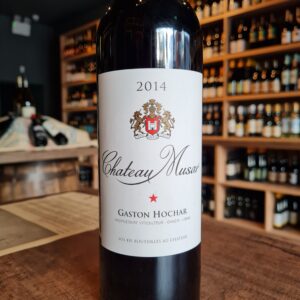 Seven years in the making, Chateau Musar Red is a blend of Cabernet Sauvignon, Carignan and Cinsault from vineyards near the Bekaa Valley villages of Aana and Kefraya on gravelly soils over limestone. Planted from the 1930s onwards, yields are low from these mature bushvines (average age: 40 years):. The varietal components are brought together two years after the harvest; the resulting blend is then placed back in cement tanks before being bottled 12 months later. After 4 years’ bottle maturation in the deep stone cellars of Chateau Musar, the finished wines are released a full seven years after the harvest. Bottled unfined and unfiltered, Chateau Musar Reds are suitable for vegans; they’re also richly-textured and likely to ‘throw a crust’. This is a common feature of most fine wines and is especially true of Musar Red vintages over a decade old. Ideally, bottles should be standing up the night before opening to allow the sediment to settle. After careful decanting (and discarding of sediment, usually in the last centimetre of the bottle) the wine should be allowed to breathe for an hour and served at 18°C with roasts, grills (especially lamb), casseroles, game, and mature cheeses. One of my favourite wines and at somewhate affordable price.
Seven years in the making, Chateau Musar Red is a blend of Cabernet Sauvignon, Carignan and Cinsault from vineyards near the Bekaa Valley villages of Aana and Kefraya on gravelly soils over limestone. Planted from the 1930s onwards, yields are low from these mature bushvines (average age: 40 years):. The varietal components are brought together two years after the harvest; the resulting blend is then placed back in cement tanks before being bottled 12 months later. After 4 years’ bottle maturation in the deep stone cellars of Chateau Musar, the finished wines are released a full seven years after the harvest. Bottled unfined and unfiltered, Chateau Musar Reds are suitable for vegans; they’re also richly-textured and likely to ‘throw a crust’. This is a common feature of most fine wines and is especially true of Musar Red vintages over a decade old. Ideally, bottles should be standing up the night before opening to allow the sediment to settle. After careful decanting (and discarding of sediment, usually in the last centimetre of the bottle) the wine should be allowed to breathe for an hour and served at 18°C with roasts, grills (especially lamb), casseroles, game, and mature cheeses. One of my favourite wines and at somewhate affordable price. -
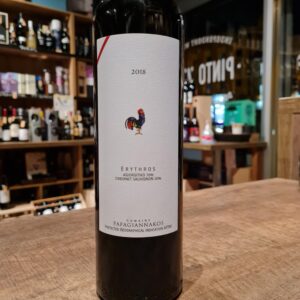 Founded in 1919, Domaine Papagiannakos is located in the Attica region of Central Greece, just 18 miles from Athens. Today, the winery is run by the 3rd generation, Vassilis Papagiannakos, who has issued a new era of modern winemaking while still maintaining the family’s dedication to cultivating and preserving the region’s most famous indigenous grape, Savatiano( We have this one in stock too!). The winery produces a small amount of red wine, showcasing both the indigenous Agioritiko as well as international varietals such Cabernet Sauvignon in this case. Agiorgitiko is a historical variety with a great genetic variation. The vineyards used for the Papagiannakos Erythros are located in southeastern Attica at an altitude of 360 feet. The vineyard is relatively young, with an average of 20-years-old, and has a north-facing exposure. The vineyard is farmed without irrigation, resulting in low-yielding vines that produce grapes with rich, concentrated fruit flavours. The structure of this red wine makes it an ideal pairing for a variety of red meat dishes, as well as hard cheeses.
Founded in 1919, Domaine Papagiannakos is located in the Attica region of Central Greece, just 18 miles from Athens. Today, the winery is run by the 3rd generation, Vassilis Papagiannakos, who has issued a new era of modern winemaking while still maintaining the family’s dedication to cultivating and preserving the region’s most famous indigenous grape, Savatiano( We have this one in stock too!). The winery produces a small amount of red wine, showcasing both the indigenous Agioritiko as well as international varietals such Cabernet Sauvignon in this case. Agiorgitiko is a historical variety with a great genetic variation. The vineyards used for the Papagiannakos Erythros are located in southeastern Attica at an altitude of 360 feet. The vineyard is relatively young, with an average of 20-years-old, and has a north-facing exposure. The vineyard is farmed without irrigation, resulting in low-yielding vines that produce grapes with rich, concentrated fruit flavours. The structure of this red wine makes it an ideal pairing for a variety of red meat dishes, as well as hard cheeses. -
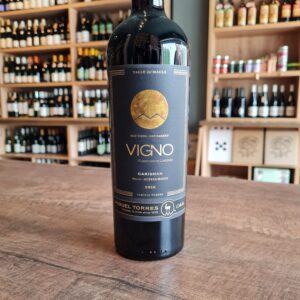 Miguel Torres Cordillera Carignan is a 100% Carignan, sourced from old, dry vineyard in the Maule Valley. Miguel Torres acquired a small winery in Curicó, in the Chilean central valley, in 1979. It was the first foreign company to back Chilean vineyard production. The excellent climate conditions for cultivating grapevines, with great temperature differences between night and day and lands are free of the grape phylloxera, have contributed to the fact that sublime wines are being made in lands from where one can view the greatness of the Andes, crowned by snow and a noble beauty. As of 2010 Miguel Torres Chile is directed by Miguel Torres Maczassek, a fifth generation Torres winemaker who moved to Chile with his family in order to maintain the tradition and passion for winemaking that the Torres family has demonstrated for over a hundred years. Some of the Carignan vines in the Maule Valley from which this wine is made are up to 80 years old and are some of the world’s oldest. Opaque, intense ruby red color. Floral and fruit aromas with toasty oak imparted undertones. The palate is big and unfolds beautifully. Here the notes perceived on the nose are complemented by hints of bay leaf and mint. Ideal with patés, duck confit, rice with meat or vegetables, roast or barbecued beef, ragouts and beef stews.
Miguel Torres Cordillera Carignan is a 100% Carignan, sourced from old, dry vineyard in the Maule Valley. Miguel Torres acquired a small winery in Curicó, in the Chilean central valley, in 1979. It was the first foreign company to back Chilean vineyard production. The excellent climate conditions for cultivating grapevines, with great temperature differences between night and day and lands are free of the grape phylloxera, have contributed to the fact that sublime wines are being made in lands from where one can view the greatness of the Andes, crowned by snow and a noble beauty. As of 2010 Miguel Torres Chile is directed by Miguel Torres Maczassek, a fifth generation Torres winemaker who moved to Chile with his family in order to maintain the tradition and passion for winemaking that the Torres family has demonstrated for over a hundred years. Some of the Carignan vines in the Maule Valley from which this wine is made are up to 80 years old and are some of the world’s oldest. Opaque, intense ruby red color. Floral and fruit aromas with toasty oak imparted undertones. The palate is big and unfolds beautifully. Here the notes perceived on the nose are complemented by hints of bay leaf and mint. Ideal with patés, duck confit, rice with meat or vegetables, roast or barbecued beef, ragouts and beef stews. -
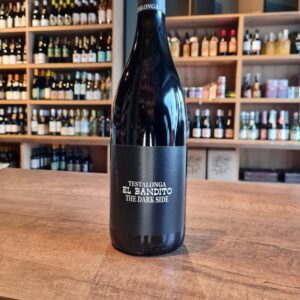 The El Bandito The Dark Side 2017 by Testalonga comes from Shiraz vineyards from the early 2000s - the vines are still in full bloom, but thanks to the low yield, they are already delivering phenolic grapes. The vineyards are cultivated by Craig with no herbicites, pesticides or fungicites. He also does without artificial irrigation. These measures alone have a positive effect on the quality of the grapes and keep the yield low. After hand-picking, the grapes are fermented spontaneously with the vineyard's own yeast and matured in 3000l wooden barrels. After expansion, it is neither fined nor filtered and filled with minimal sulfur. The Testalonga El Bandito The Dark Side has a deep dark color with a black core. It smells of red berries and dark stone fruits, of cloves, mocha and cocoa beans as well as tart spiciness. On the palate it has a present tannin and a fine interplay of acids. In terms of alcohol, the Shiraz is quite slim and straight, but still brings a weighty body into play. The finish is long and dominated by the heavier aromas. The El Bandito The Dark Side Shiraz demands air, so give it a few hours in the carafe before serving it slightly chilled from large glasses with roasted game, braised lamb or an oven-baked bean stew with roasted butter crumbs and thyme.
The El Bandito The Dark Side 2017 by Testalonga comes from Shiraz vineyards from the early 2000s - the vines are still in full bloom, but thanks to the low yield, they are already delivering phenolic grapes. The vineyards are cultivated by Craig with no herbicites, pesticides or fungicites. He also does without artificial irrigation. These measures alone have a positive effect on the quality of the grapes and keep the yield low. After hand-picking, the grapes are fermented spontaneously with the vineyard's own yeast and matured in 3000l wooden barrels. After expansion, it is neither fined nor filtered and filled with minimal sulfur. The Testalonga El Bandito The Dark Side has a deep dark color with a black core. It smells of red berries and dark stone fruits, of cloves, mocha and cocoa beans as well as tart spiciness. On the palate it has a present tannin and a fine interplay of acids. In terms of alcohol, the Shiraz is quite slim and straight, but still brings a weighty body into play. The finish is long and dominated by the heavier aromas. The El Bandito The Dark Side Shiraz demands air, so give it a few hours in the carafe before serving it slightly chilled from large glasses with roasted game, braised lamb or an oven-baked bean stew with roasted butter crumbs and thyme. -
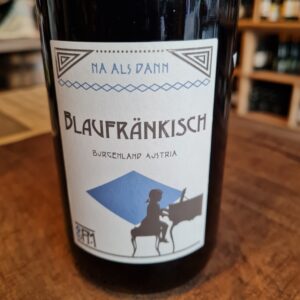 Blaufränkisch equals Austria. It is one of those typical, local, emerging grapes that have put Austria on the international wine market in recent years. Spicy nose with notes of ripe fruit such as currants and blackberries. The tannins are soft but present enough to structure the wine.All combines in a high-quality example of typical Blaufränkisch.
Blaufränkisch equals Austria. It is one of those typical, local, emerging grapes that have put Austria on the international wine market in recent years. Spicy nose with notes of ripe fruit such as currants and blackberries. The tannins are soft but present enough to structure the wine.All combines in a high-quality example of typical Blaufränkisch. -
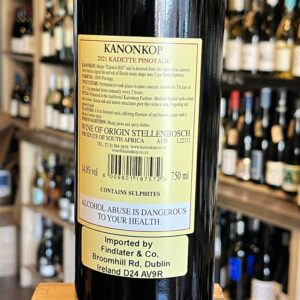
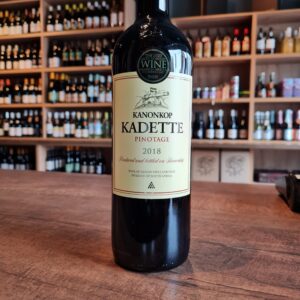 The Kanonkop Kadette Pinotage 2021 shows intense purple hues with lively aromas of fresh plums, mulberries and allspice, followed by a meaty undertone. The palate displays an inherent earthy touch, with flavours of crimson beetroot and maraschino cherries. Wonderful coherent balance between the fruit and the fresh acidity, with muscular support from the tightly woven tannin structure.
The Kanonkop Kadette Pinotage 2021 shows intense purple hues with lively aromas of fresh plums, mulberries and allspice, followed by a meaty undertone. The palate displays an inherent earthy touch, with flavours of crimson beetroot and maraschino cherries. Wonderful coherent balance between the fruit and the fresh acidity, with muscular support from the tightly woven tannin structure. -
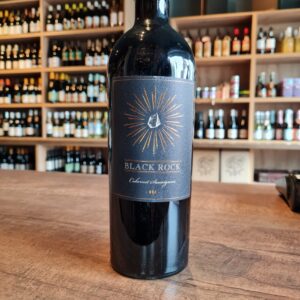 Black Rock is part of the Bronco Wine Company, which was formed in 1973 by Fred, Joseph and John Franzia. Since the start, they have been clear that the goal is to make wines for consumption, rather than for storage. At the same time, the quality must be as high as possible, at the lowest possible price. The name Bronco is a merger of brother and cousin after the brothers Fred and Joseph and their cousin John. Great aromas of red berries and fruit, with a touch of herbaceousness. Full-bodied, with healthy fruit tones, well-balanced tannins and a subtle hint of oak. Serve around 16-18 ° C as a perfect complement to grilled lamb chops, or to dishes on game or beef. Also nice for a cheese platter, with not too strong cheeses.
Black Rock is part of the Bronco Wine Company, which was formed in 1973 by Fred, Joseph and John Franzia. Since the start, they have been clear that the goal is to make wines for consumption, rather than for storage. At the same time, the quality must be as high as possible, at the lowest possible price. The name Bronco is a merger of brother and cousin after the brothers Fred and Joseph and their cousin John. Great aromas of red berries and fruit, with a touch of herbaceousness. Full-bodied, with healthy fruit tones, well-balanced tannins and a subtle hint of oak. Serve around 16-18 ° C as a perfect complement to grilled lamb chops, or to dishes on game or beef. Also nice for a cheese platter, with not too strong cheeses.


